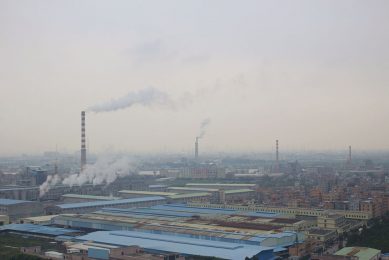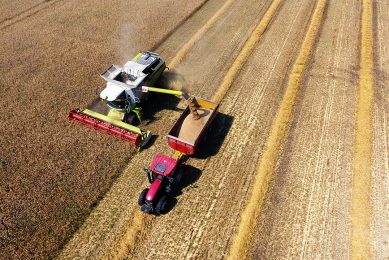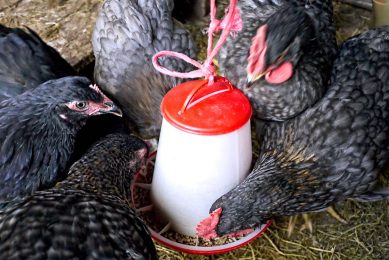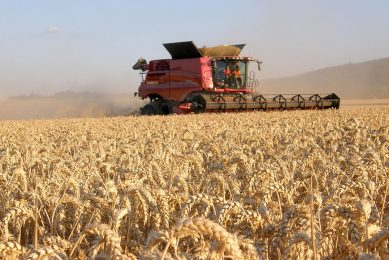Heading for the future: The food facts

Often quoted, hardly put in further context: the year 2030. How will future developments affect the growth of meat consumption and production? Using many sources and extrapolating existing figures, Dr Luciano Roppa made an attempt to get a grip on what the world would like the agricultural world to deliver by that year.
Sometimes, when the year 2030 is mentioned in projections, this may sound abstract or simply far away. In case somebody warns the society in 2012 for future pressures on the global food system, the figures seem abstract, vague, or not specific enough. So for all who have been looking for these data – a more detailed projection than this overview can hardly be given.
It is hard to combine all of livestock production’s future challenges into one sentence. But if one would try, it would sound like this: “We need to produce more and better, with less resources and everything sustainable.” That is a start. Now the questions are – how much more, which resources will be lessened and how sustainable exactly?
Population in 2030
At the moment, the world produces enough food to provide at least 2,800 kcal/person/day. Of a daily ration, livestock production provides 17% of the energy and 33% of the daily human protein needs. This amount, however, is not evenly spread out over all the people in the world. Next to about 1.3 billion people being overweight there are about 1 billion people being underfed.
The figures are likely to grow until 2030, as another 1.4 billion people are projected to be added to the world’s total, leading to a population of 8.3 billion people. The majority (88% of this growth) will come to live in Asia and Africa. Asia is expected to have an additional 750 million souls by that time (to about 4.9 billion in total), and Africa will have an additional 492 million people. In Europe however, total population is expected to come down by 10 million.
Meat demand in 2030
Having quantified these developments, they all point in the same direction: Demand for meat will grow strongly. Table 1 shows what this means for future meat production. The bottom line here is that the production needs to be stepped up by 38% in the next twenty years. Needless to say is that the strongest growth in demand will come from Asia. In 2012, China is producing 49.7% of all the pork produced in the entire world. And this will continue to grow as even in the next ten years pig meat production growth for China alone is expected to be 22.7%.
The future looks the brightest for poultry meat as the mix of animal protein consumption is changing towards cheaper, low-fat meats, see also Figure 1. In addition, part of the global growth will take place in countries with large Muslim or Hindu populations, which respectively forbid the consumption of pork and encourages being vegetarian. Partly, this is also due to a higher percentage of people becoming older – when on average the attitude to food changes from red meat to white meat.
Poultry production will grow nearly twice as fast in developing countries (4.5 million tonnes) than in developed countries (2,4 mt). Poultry production will grow most in Asia (2.75 mt), followed by Latin America (1.61 mt). Growth in North America and Europe will be similar (1.17 and 1.04 mt).
Looking at the meat demand on a personal rather than a national perspective one can see that the average meat consumption per capita is 40.9 kg/year in 2010 and is expected to rise towards 48.5 kg/year in 2030. As a consequence of urbanisation, demand for fast food and ready to cook meals will grow.
Feed demand
To keep the meat production growing, an estimated 340 million tonnes of extra grains will be needed to feed the animals. Again, not surprisingly, the majority of this amount will be needed in India and China, see Figure 2. This, however, will lead to a need for more arable land – only to be used by unsustainable food production systems.
- Feed and livestock production requires water. In total, agribusiness is responsible for about 70% of the world’s water consumption, beef costing the most with more than 15,000 litres of water per kg produced. In addition, the amount of water for agricultural production is likely to grow in the next 20 years with an additional 30%. This will most probably lead to water scarcity and thus to price increases, in turn affecting those societies most where larger parts are still working in agriculture, like Africa and Asia.
- Energy consumption will rise as well as a result of more people having more income – a 39% rise until 2030 is projected. Especially the countries outside the Organisation for Economic Co-Operation and Development (OECD) will grow; there the energy demand will be 68% higher than today.
- Waste occurs in both industrialised and developed countries. In industrialised countries, about 40% of food losses occur at retail and consumer levels. In developed countries, 40% of food losses occur at post-harvest and processing levels.
- Biofuels may present one more problem for the future as this also requires land, water and energy to grow.
The total package of increased demand, fewer resources and speculators may well result in both an increase in prices as well as extreme price volatility with producers being the ones to feel the pain, having lower profits.
Solutions will need to be found in many different directions. For instance, some governments have started to purchase arable land in other countries. China has been doing so over the last couple of years. In addition, import and export patterns may change, with the United States and Brazil leading the way. More structural solutions could be the use of different types of raw materials in animal production, as well as the use of enzymes.
Sustainable production
Sustainability, perhaps, is the most controversial topic of all. For what is important in one country is completely irrelevant in the next. We are living in a generation with strong social dichotomy, graphically depicted in Figure 3. On one hand there are societies in which consumption patterns are affected by strong food safety requirements, animal welfare regulations, influence of livestock production on the climate and with the question how to survive. On the other hand, there are societies where food is needed at low costs, and where availability is more important than quality. In these societies, meat consumption is driven by population growth, improvements in standards of living, urbanisation and lower purchasing power.
Solving the requirements of the first type of society may be the most technically challenging – a type that is likely to grow as well and posing many questions to producers in the long run. Meeting all requirements a modern society asks, however, can only be achieved by unifying these in one, all-encompassing, targeted approach. Creating that is arguably the most challenging task of all. After all, it will be 2030 in less than 18 years…
This presentation was given at Alltech’s Pig Solutions Seminar, October 2011, Dunboyne, Ireland.
Planet Earth in 2030
|











